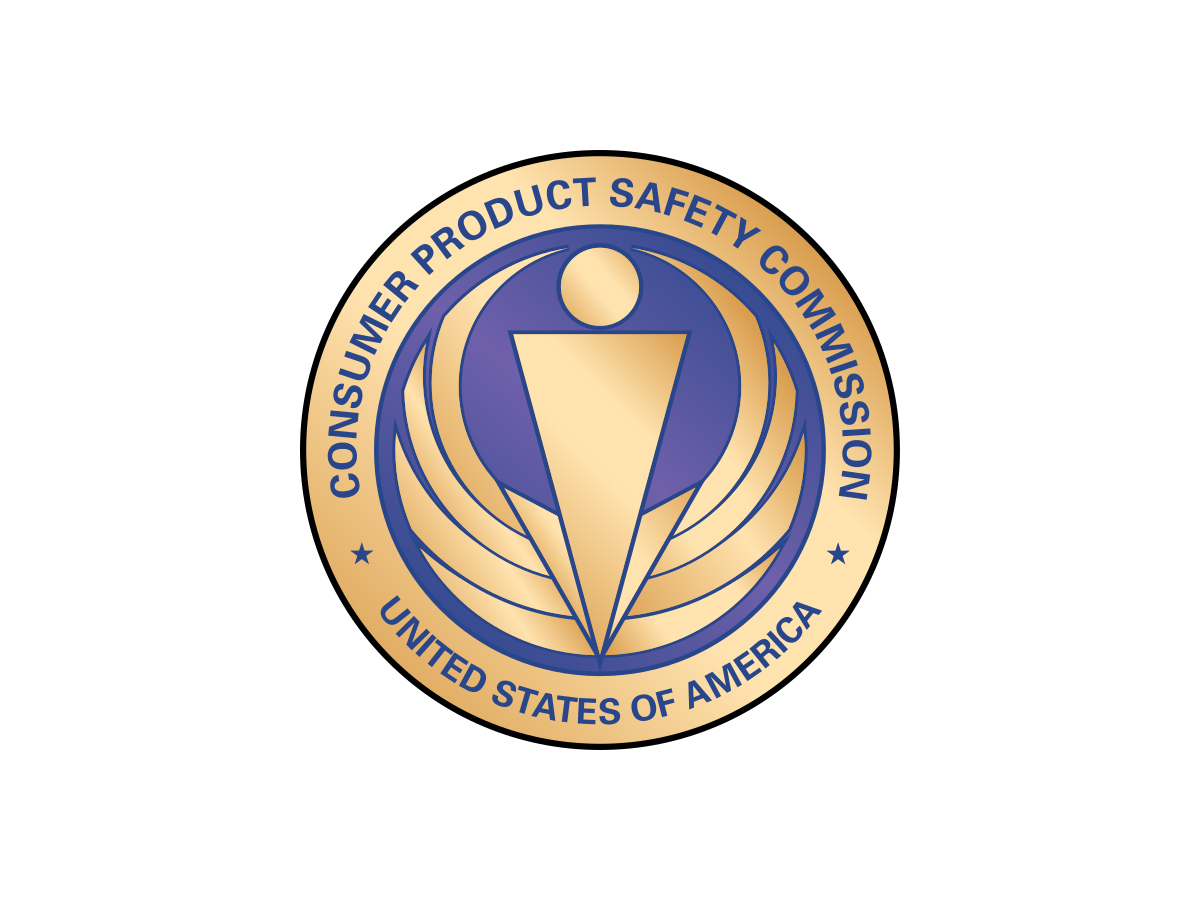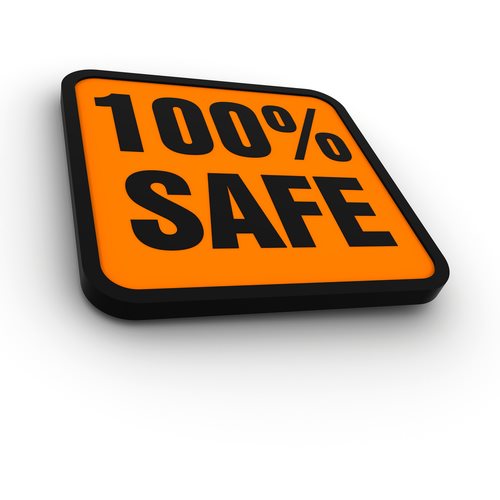Let’s be real, folks. When it comes to buying stuff, we often don’t think twice about how safe it is. But here’s the deal—there’s a whole team working behind the scenes to make sure what you bring into your home won’t end up in the ER. That’s where the Consumer Product Safety Commission (CPSC) comes in. This guide is all about breaking down what they do, why it matters, and how it impacts you and your family. So, buckle up because we’re diving deep into the world of product safety!
Picture this: you’re shopping for a new crib for your little one, or maybe you’re picking out a cool new blender for your kitchen. You trust that these products are safe, right? Well, the CPSC is the reason you can have that peace of mind. They’re like the superheroes of product safety, making sure everything from toys to power tools meets strict safety standards.
But here’s the thing—not everyone knows what the CPSC actually does or why it’s such a big deal. That’s why we’re here. This guide is designed to give you the full scoop, from the basics to the nitty-gritty details. Whether you’re a parent, a consumer, or just someone who wants to know more about the products they use, this is your one-stop shop for understanding the CPSC.
What is the Consumer Product Safety Commission Anyway?
Alright, let’s get down to business. The Consumer Product Safety Commission, or CPSC for short, is a federal agency in the U.S. that’s all about keeping you and your loved ones safe. Established in 1972, it’s been on a mission to protect the public from unreasonable risks of injury or death associated with consumer products. Think of it as the gatekeeper of product safety.
Here’s a quick rundown of what they do:
- Set safety standards for thousands of products.
- Investigate and recall hazardous items.
- Conduct research on potential dangers.
- Educate consumers about product safety.
But why does this matter to you? Simple. Every time you buy something—whether it’s a toaster, a toy, or even a mattress—you’re trusting that it’s been tested and approved by the CPSC. They’re the ones making sure that the stuff you bring into your home won’t harm you or your family.
Why Was the CPSC Created?
Back in the day, before the CPSC existed, product safety was kind of a free-for-all. Companies could sell pretty much anything without much oversight, and that led to some serious problems. Think faulty appliances, dangerous toys, and even products that caused fires. Enough was enough, so in 1972, the CPSC was born.
The goal? To create a centralized authority that could regulate and enforce safety standards across the board. And let me tell you, it’s made a huge difference. Since the CPSC came into play, we’ve seen a significant drop in product-related injuries and deaths. That’s something worth celebrating!
The CPSC’s Role in Protecting Consumers
Now that you know what the CPSC is, let’s talk about what they actually do on a day-to-day basis. Spoiler alert: it’s a lot. From setting safety standards to investigating accidents, the CPSC is constantly on the move to keep us safe. Here’s a closer look at their key responsibilities.
Setting Safety Standards
One of the CPSC’s biggest jobs is setting safety standards for consumer products. They work with manufacturers, industry experts, and even other government agencies to create guidelines that ensure products are safe to use. This applies to everything from cribs and strollers to power tools and electronics.
But here’s the kicker—they don’t just set standards and call it a day. The CPSC regularly reviews and updates these standards to keep up with advancements in technology and changes in consumer behavior. It’s like they’re always one step ahead of the game.
Recalling Hazardous Products
Let’s face it—sometimes things slip through the cracks. That’s where recalls come in. If the CPSC discovers that a product poses a risk to consumers, they’ll issue a recall to get it off the market. This can happen for a variety of reasons, like design flaws, manufacturing defects, or even unexpected hazards that weren’t caught during testing.
And guess what? They don’t just rely on themselves to spot these issues. The CPSC works closely with manufacturers, retailers, and even consumers to identify potential problems. It’s a team effort, and it’s all about keeping you safe.
How the CPSC Impacts Your Daily Life
Alright, let’s bring it home. How does the CPSC actually impact your day-to-day life? Well, in more ways than you might think. Every time you use a product—whether it’s a hairdryer, a child’s car seat, or even a set of kitchen knives—you’re benefiting from the work the CPSC does. Here are a few examples:
- Toys: The CPSC makes sure that toys are free from harmful chemicals and small parts that could pose a choking hazard.
- Electronics: They test appliances and gadgets to ensure they won’t overheat or catch fire.
- Furniture: From cribs to bookshelves, the CPSC ensures that furniture is stable and won’t tip over.
But it’s not just about preventing accidents. The CPSC also plays a big role in educating consumers about product safety. They provide resources, tips, and even warnings to help you make informed decisions when you’re shopping.
Real-Life Examples of CPSC Success
Let’s talk numbers for a second. Did you know that since the CPSC was established, there’s been a 30% decrease in product-related deaths? That’s huge. Here are a few real-life examples of how the CPSC has made a difference:
- In 2019, they recalled over 2 million defective smoke alarms that could fail to alert homeowners in case of a fire.
- In 2020, they worked with manufacturers to recall thousands of hoverboards that were at risk of catching fire.
- In 2021, they issued guidelines for safe sleeping environments for infants, which helped reduce the number of SIDS-related deaths.
These are just a few examples, but they show just how important the CPSC’s work really is.
The Importance of Consumer Awareness
Here’s the thing—the CPSC can’t do it all alone. As consumers, we have a responsibility to stay informed and vigilant about the products we use. That means checking for recalls, following safety guidelines, and even reporting any issues we encounter.
But how do you stay on top of all this? Luckily, the CPSC makes it easy. They have a website where you can check for recalls, sign up for alerts, and even submit reports if you encounter a problem with a product. It’s like having a personal safety expert in your pocket.
Tips for Staying Safe
Here are a few quick tips to help you stay safe and informed:
- Regularly check the CPSC website for recalls.
- Follow the manufacturer’s instructions for any product you use.
- Report any issues you encounter to the CPSC.
- Keep an eye on your kids’ toys and make sure they’re age-appropriate.
By taking these simple steps, you can help ensure that the products you use are safe and reliable.
Challenges Facing the CPSC
Of course, no organization is perfect, and the CPSC faces its fair share of challenges. One of the biggest is keeping up with the rapid pace of technological advancements. As new products hit the market, the CPSC has to quickly adapt and create new safety standards. It’s a tough job, but they’re up for the challenge.
Another challenge is funding. Like any government agency, the CPSC relies on taxpayer dollars to do its work. In recent years, there’s been some debate about whether they have enough resources to tackle all the issues they face. But despite these challenges, they continue to do incredible work to keep us safe.
How You Can Help
So, what can you do to support the CPSC? For starters, stay informed and spread the word. Share their resources with friends and family, and encourage them to check for recalls. You can also participate in their surveys and studies to help them gather data on consumer behavior.
And if you’re really passionate about product safety, consider getting involved in advocacy efforts. There are plenty of organizations out there working to support the CPSC and push for stronger safety standards. Every little bit helps!
Looking to the Future
As we move forward, the role of the CPSC is only going to become more important. With new technologies emerging every day, the need for strong safety standards has never been greater. But here’s the good news—the CPSC is ready for the challenge. They’re constantly innovating and adapting to meet the needs of modern consumers.
So, what does the future hold? We can expect to see even more advanced safety standards, better recall systems, and increased consumer awareness. It’s an exciting time to be a part of the product safety conversation, and the CPSC is leading the way.
Final Thoughts
Let’s wrap this up with a few key takeaways. The Consumer Product Safety Commission is a vital part of our daily lives, working tirelessly to keep us safe from harmful products. They set safety standards, investigate hazards, and educate consumers about how to stay safe. But they can’t do it alone—we all have a role to play in ensuring product safety.
So, the next time you’re shopping for a new product, take a moment to think about the CPSC. They’re the reason you can trust that what you’re buying is safe and reliable. And if you ever encounter a problem, don’t hesitate to report it. Together, we can make the world a safer place.
Table of Contents
- What is the Consumer Product Safety Commission Anyway?
- Why Was the CPSC Created?
- The CPSC’s Role in Protecting Consumers
- Setting Safety Standards
- Recalling Hazardous Products
- How the CPSC Impacts Your Daily Life
- Real-Life Examples of CPSC Success
- The Importance of Consumer Awareness
- Tips for Staying Safe
- Challenges Facing the CPSC
Thanks for sticking with me through this comprehensive guide. Now go out there and be a product safety champion! And don’t forget to share this article with your friends and family. Together, we can make a difference!


